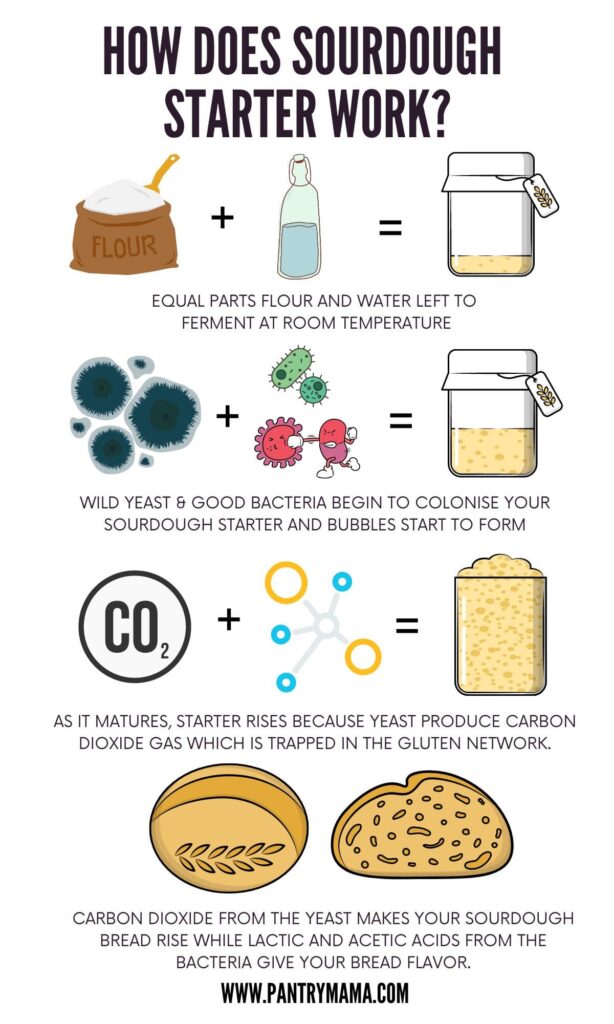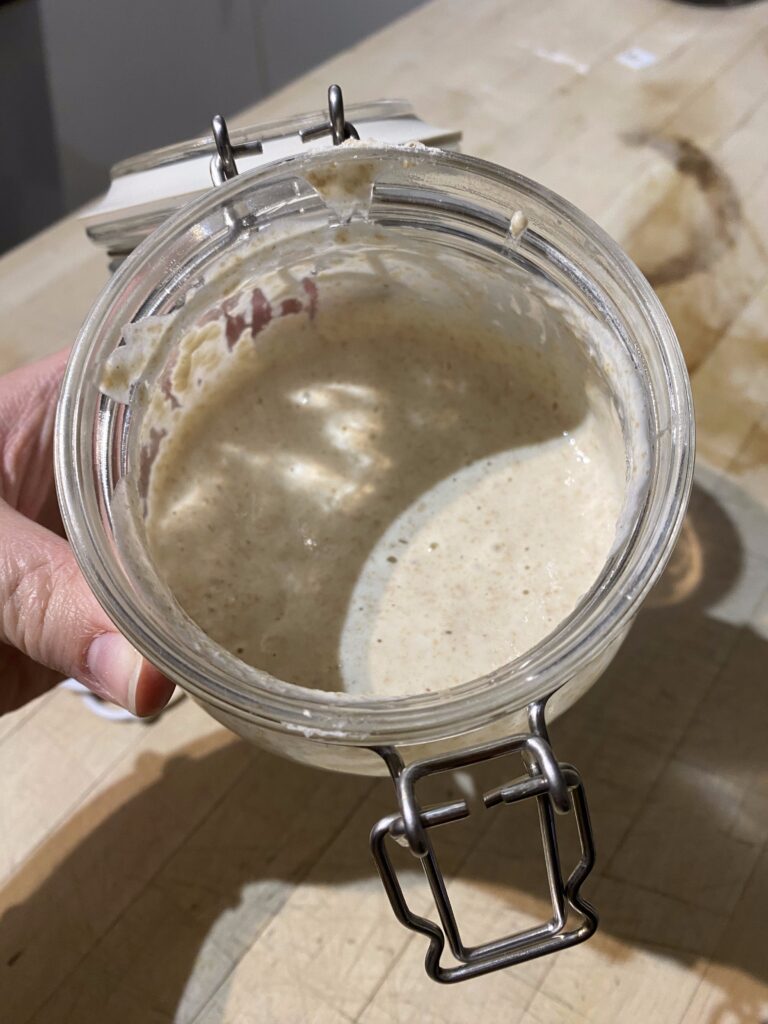The thing that sets sourdough bread apart from regular bread is a thing called “starter”. The definition of a sourdough starter is an active colony of wild yeast and good bacteria cultivated by combining flour and water and allowing it to ferment. Before getting my hands dirty I had to do a little research into the biology of it, plus it can help teach children about microbiology with a yummy prize at the end!
The Sourdough Microbiome
To start a sourdough starter we mix equal parts of flour and water together, leave at room temperature and allow the fermentation process to occur. Bacteria and yeast in the flour and air around you enable the microbes to convert the sugars in the flour into ethanol, carbon dioxide and acids. CO2 allows our bread to rise, the acids give it the distinct flavour we love, and enzymes produced by the bacteria pre-digest the flour, giving sourdough bread its wonderful health benefits.
How Does it Work?
So now I know what is in my jar, but how does it work? How does this weird-looking mixture help our bread dough rise and give us a yummy loaf?
When we mix our active starter into our dough we introduce a bunch of microorganisms into the mix. When we leave the dough we allow those microorganisms to get to work breaking down the carbohydrates in the flour to create CO2. This CO2 getting caught in gluten pockets is what allows our bread to rise – the gluten pockets and strands are what we are creating during the stretching and folding process. However, it goes beyond carbon dioxide. Recall the lactic acid bacteria we discussed before? They’re not simply turning the dough sour, either. Additionally, they are generating the enzymes needed to break down the gluten proteins in flour. For this reason, compared to regular bread made with commercial yeast, sourdough bread frequently has less gluten. Although it is still not recommended for those with celiac disease or gluten allergies, it is easier to digest and can frequently be accepted by those who are sensitive to gluten.
There you have it, a brief summary of the science behind sourdough. The world of yeast, bacteria, and gluten is a fascinating one, as they all come together to produce the ideal loaf of bread.

My Starter
Now, I’m lucky, usually to grow your own starter to the point it is ready to bake with takes at least a week or more. If you remember my roommate from before who is an expert, she had a thriving starter in our fridge – she kindly allowed me to take some of hers to feed and start my own! I fed my starter 3 times to grow it but ran into an issue, my starter was watery. I thought it was all over, maybe I wasn’t made to be a baker. I decided to feed my starter one more time, but this time with no water. Messing with the ratios is frowned upon in the sourdough community but I thought “what the heck may as well”.
In the morning I found my starter was bubbly! I performed a float test and it was ready to bake with, I was very excited and couldn’t wait to start the process.

Leave a Reply
You must be logged in to post a comment.